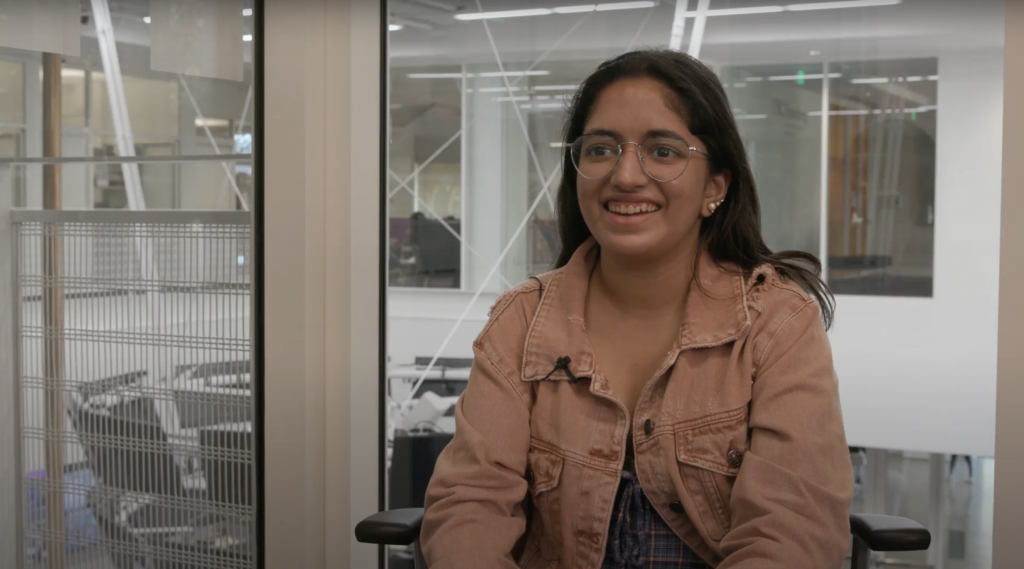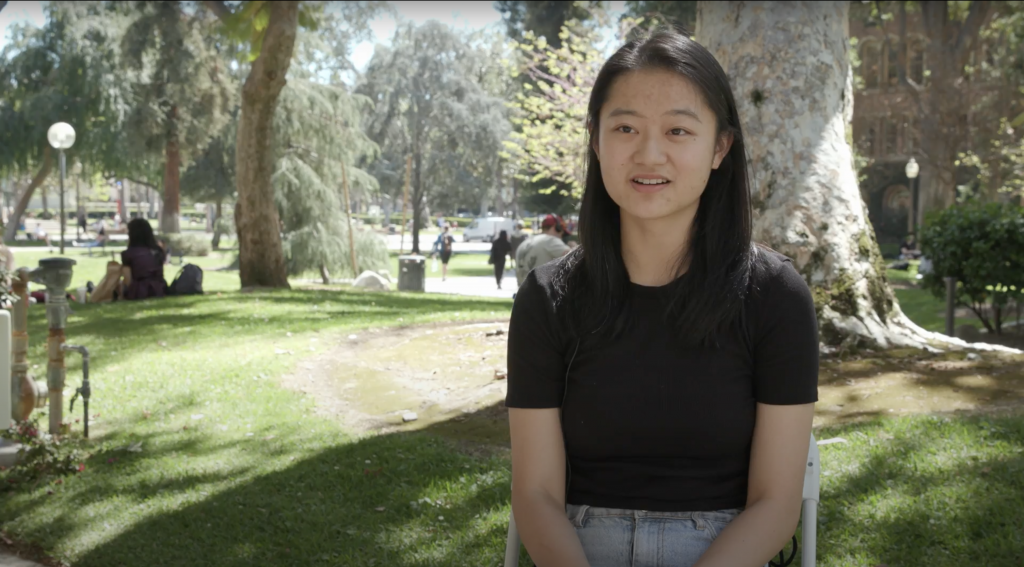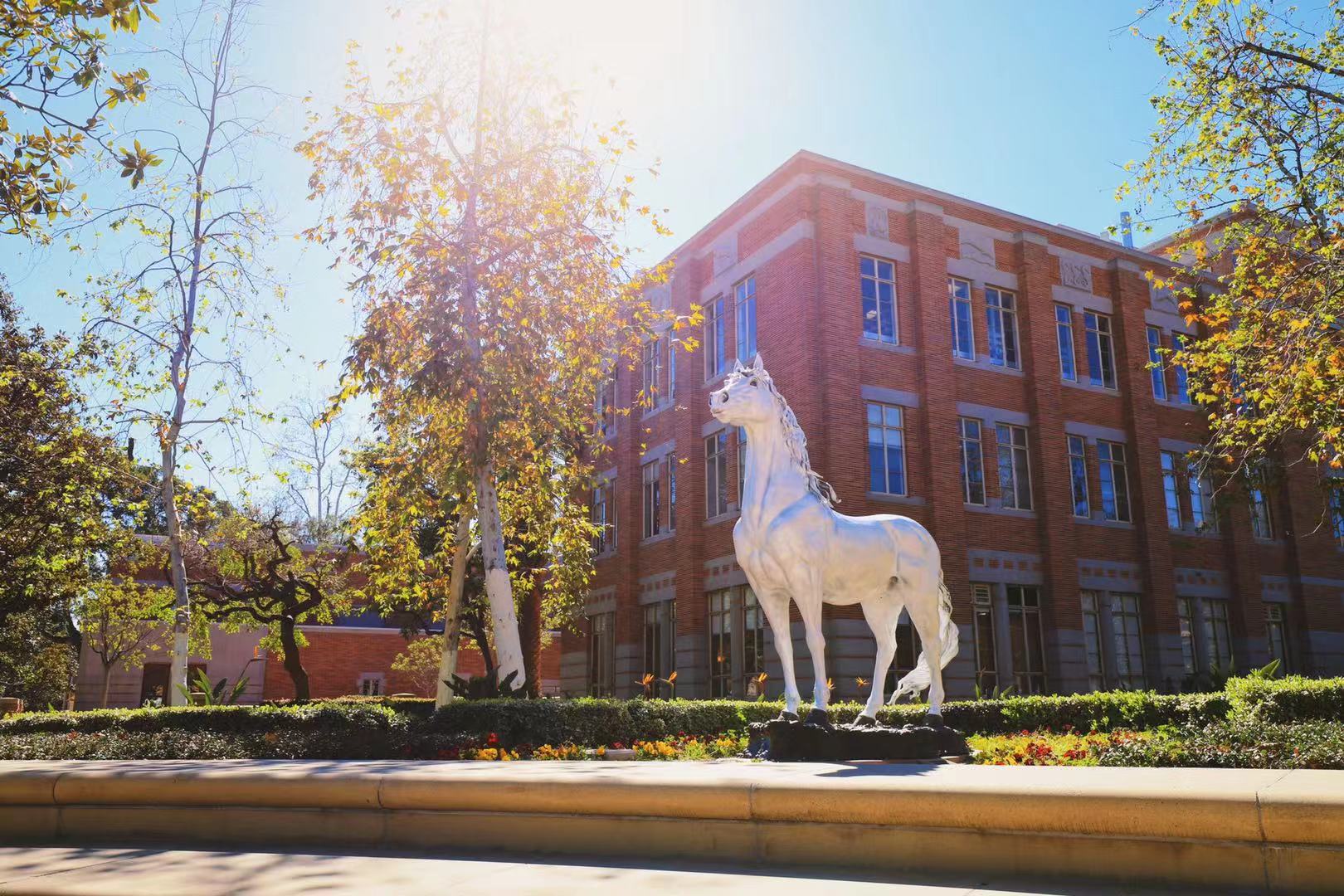When 18-year-old Twesha Dikshit came to the United States from India for college, she was expecting a place where she could meet new people and be introduced to a new culture. She was ecstatic to be in Los Angeles and was excited about everything the city has to offer. And, like many other students accepted to USC, she was particularly enthusiastic about all the classes, professors, programs, and resources available at the university.

It was like that – until the COVID-19 pandemic hit in 2020. What had been a steady rhythm of life was suddenly disrupted and became full of uncertainty, and everyone’s work and life were turned upside down. However, international students like Dikshit have had a very different experience than others because of the pandemic’s tremendous influence on their education and mental health.
As the coronavirus pandemic upends a third consecutive school year, online classes continue to be a huge part of international students’ school life. Twesha Dikshit is a senior at USC studying journalism and Cinema and Media Studies. Having majored in these areas, she believes online classes have definitely changed the quality of education she receives.
“I just felt like I was doing the online college experience, but I wasn’t really getting anything out of it because I couldn’t connect with my professors or my friends or any of that in the same way,” says Dikshit, “A lot of what I learned is through doing things and being in person, like talking with my friends and professors and all that. So, I don’t think the quality of education was the same at all. And then even when I was attending Zoom classes, I wouldn’t usually have my camera on, or I wouldn’t participate as much. Especially when I was doing classes from India because I think I would have class at like 3 or 4 a.m., and I was very not alert. I didn’t really know what was going on.”
Rachel Zhang is also an international student from China. She is a senior majoring in Economics with minors in business finance and risk management. Despite the fact that her programs do not require as many in-person activities, she believes that education quality is “not at the same level” as it was before the pandemic. Taking an online class from 1 a.m. to 3 a.m. in China was the most distressing experience for her during the pandemic.
“Every time I realized I fell asleep again in that class because it was so late, that was very painful. And even with the recordings, I wasn’t very comfortable and willing to watch it because it was just so hard, having to deal with the time difference and I also find it super hard to connect with classmates and professors,” Zhang said.
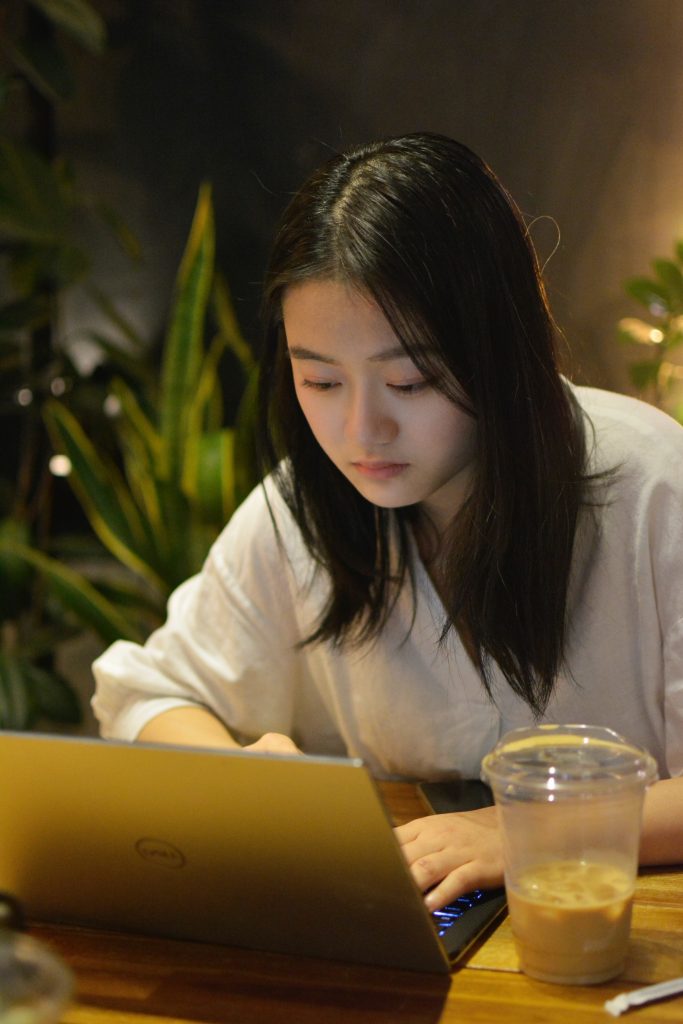
Dr. Mark Power Robison is a Professor of Clinical Education and History at the Rossier School of Education, as well as the Chair of the Global Executive Doctor of Education program. He teaches higher education courses and consults with higher education institutions all around the world. In his opinion, the pandemic created a huge amount of anxiety and uncertainty for international students, in addition to all of the other pandemic problems that plagued everyone.
“Early in the pandemic, there was this question as to their visa status because of switching to online classes,” Dr. Robinson said, “there was ongoing anxiety about what that would mean going forward. For students who were finishing their degrees, there was this extra uncertainty of that because if they went back home, they need to think about would they even be able to come back to the U.S. if they wanted to utilize their Optional Professional Training?”
OPT (Optional Practical Training) is a benefit available to international students with F-1 immigration status who are enrolled in or approaching the completion of a degree program in the United States. Dr. Robinson points out that for a number of international students, the pandemic either forced them to make decisions that they didn’t want to make or to make decisions about doing things on a schedule other than that which they would have hoped.
Guilherme Guerreiro is one of the international students whose schedule got disrupted. He is a junior from Brazil studying journalism with a minor in screenwriting at USC. Most international students’ immediate reaction following the pandemic was to try to find a way to return to their home country because they were afraid that flights would be canceled. And that was also the case for Guerreiro, who doesn’t want to be stranded here in the U.S.
“As soon as USC announced that classes were going to go online after spring break, I packed all my things, dropped them off at the public storage nearby, and beeline to the airport. That was a crazy experience because out of nowhere, I just suddenly had all these things that I was not preparing for. I had applied to live at a dorm in my sophomore year, I had certain prospects regarding what my expectations in my life were going to be like… and suddenly all of that was changing,” Guerreiro said.

In addition to the quality of education and the unexpected change of plans for life, the mental health of international students has been greatly impacted by the pandemic as well. The feeling of isolation or marginalization is what a lot of international students were feeling.
“I sometimes feel like I was marginalized in a way that my friends or family in my home country didn’t really understand my situation. But I also wasn’t able to stay connected with my friends here in college. I feel like I have no one that shares the same situation or can understand me and help me out in that situation,” Zhang said.

Dikshit also felt the same way when she was doing online classes in India. “It really isolated me from the world around me and also my friends, I feel just hard to keep in touch with people. And then it was similar when I got back here.”
Dikshit also mentioned that her mental health was impacted more and more because she was still expected to socialize with her family, and they still wanted her to spend time with them.
“They didn’t realize that I was still in school, and I was still working and doing all those things. It almost seemed like the world had stopped. It was definitely crazy and stressful, and they just didn’t understand why I was going crazy because I had finals going on, or because I was just stressed about the midterm season.”
What most struck Guerreiro during the pandemic and while in Brazil was the continuous baseline anxiety and stress, the constant fear that something bad was about to happen.
“My body was so used to being stressed all the time that I just couldn’t afford anymore to feel anything else. I was stuck in that limbo,” Guerreiro said. “And for a great time, I kind of felt like I was a fish out of water in Brazil. I was just struggling to try and put any order in my life. I feel like I was struggling to do that.”

In early March, CDC data showed that Los Angeles County’s coronavirus community level had officially dropped into the “low” category, and a new health order was issued, lifting the indoor mask order in places such as bars, stores, offices, restaurants, gyms, and movie theaters, regardless of vaccination status. Many people’s lives have brightened as the pandemic has steadily improved in the United States, and things have been gradually going back to the way they were. However, for many international students, there are still numerous challenges ahead of them.
Firstly, it was not easy for them to travel back to LA. For Guerreiro, it was also a moment of anxiety.
“I needed to renew my passport and I needed to renew my visa. And the consulates were closed. So I had to like go all the way to the capital, which is far from where I live in Brazil. And even when I did manage to get all the necessary documents to come back, I was still traveling internationally during a pandemic. For someone who’s constantly stressed out about COVID, that was crazy. There are no direct flights, and the overall trip I did ended up being like about 30 hours. I did all that trip without eating or drinking once because I was too scared to take off my mask. And I wore a face shield all the time,” Guerreiro recalled.
However, even after they manage to return to campus, these international students have a more difficult time readjusting than other students.
“It’s hard when you’re away. I was here [in the United States] last March and April, and I was fully vaccinated and safe, cases were low. And that was when the pandemic was really bad in India. At that point in time, almost everyone I knew had COVID. There were so many people dying. And I just couldn’t do anything. I was worrying about stupid things like my classes or assignments when there were so many people who just were dying. I couldn’t do anything. I was really struggling, and I don’t think my schoolwork or work was a priority then. But at the same time, I never felt like I could talk to my professors or anyone about those things,” Dikshit said.

In India, there was vaccine inequality, and Dikshit’s parents and grandparents got the vaccine much later than she did, which she thought was crazy. “For us international students, you know that you’re lucky when you’re safe and you can go on with your life. But at the same time, you’re always thinking about things back home.”
Zhang, also had a hard time adjusting when coming back to the United States. She thinks that the pandemic has made her more uncomfortable and not willing to talk to other people.
“During that a year and a half when I was taking online courses back in my home country, I don’t have friends or family members that were going through the same situation. It was hard to open up and talk to someone about my situation. And I think that’s still the case when even when I came back last semester on campus. I took a long time to adjust and to open up again and talk about what is going on in my life,” Zhang said.

Despite the hardships, most international students choose to stay, and they do not regret their decision to come to the United States to study. Many of them even intend to pursue another degree or work here after they graduate. For them, the quality of life and the opportunities the United States has to offer is still very worthwhile.
“My four years here have really transformed me,” Twesha said, “I think I’ve grown so much as a person, as a leader, and I’ve learned so much. I don’t think there’s anything that I regret about my time here. I wish the pandemic hadn’t really happened or affected my college life that much. But there are definitely lessons to be taken from it, especially once I’ve had the time to process it in the next few years. I would definitely come back to the U.S. even if I went back to India.”
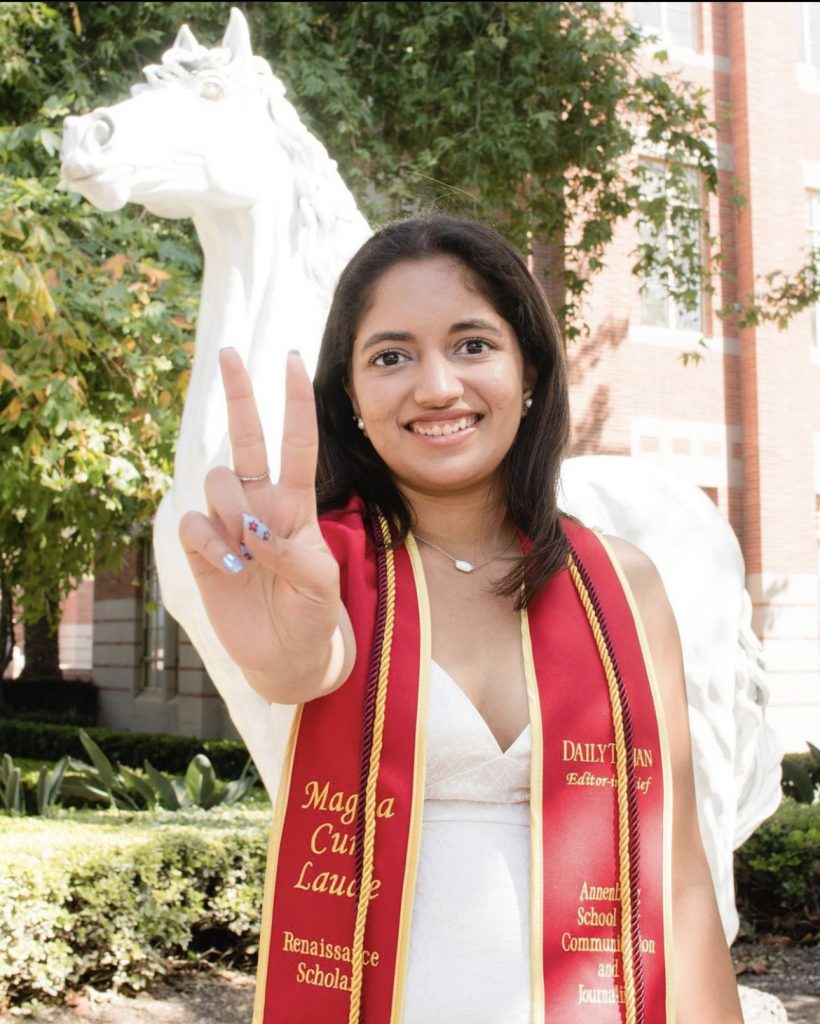
Dr. Robison believes that there are two main reasons that make international students want to stay. The first reason is the quality of education and the added value in terms of people’s career prospects.
“We have the lion’s share of the most prestigious universities in the world. In terms of prestige and the perceived value of the degrees that come from highly prestigious universities, one doesn’t have to scratch your head for very long to think about why students want to come here. But beyond that, the overall overarching cachet of American higher education is still very strong if you want to think of higher education as an industry. Our brand as American higher education remains dominant.”
Dr. Robison used China as an example since it is the single largest source of international students in the United States. He believes that what draws these students to the United States is not just the real quality of education, but also its perceived quality. In the case of China, if students study in the United States and work here after graduation, and then bring that experience back, it has more value than doing the same thing in China. And neither of those will go away even after the pandemic. They may be changing slightly, but they are still very powerful factors.
Dr. Robison said the other reason is the lack of sufficient provision of elite higher education in their own countries. “There are some excellent higher education institutions in India, but nothing like the numbers in terms of enrollment to meet demand from a country with over a billion people in it. Saudi Arabia is a big source country for the United States, and it’s facing the same issue. That’s what’s pushing the students out. So then these students have to look beyond the borders of their country to seek other options. And the United States is an obvious place to look because of our sheer number of universities and not just our prestige, but our generations of prestige and our higher education offerings.”
Listen to their stories

